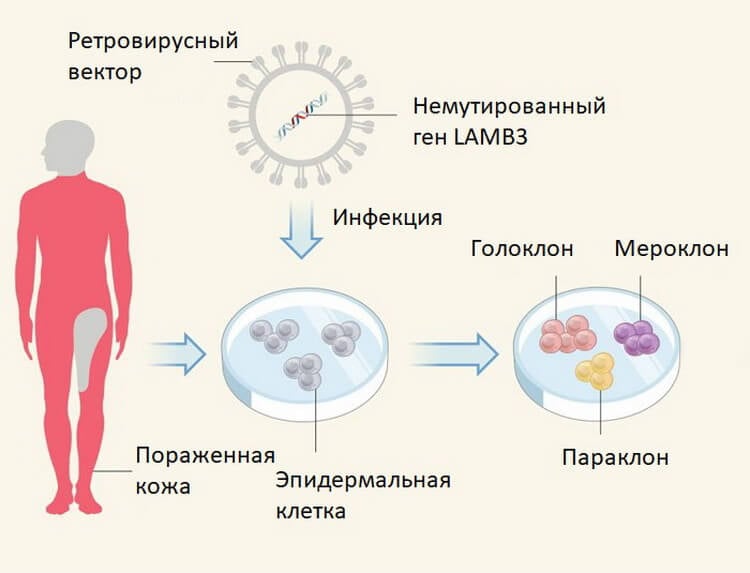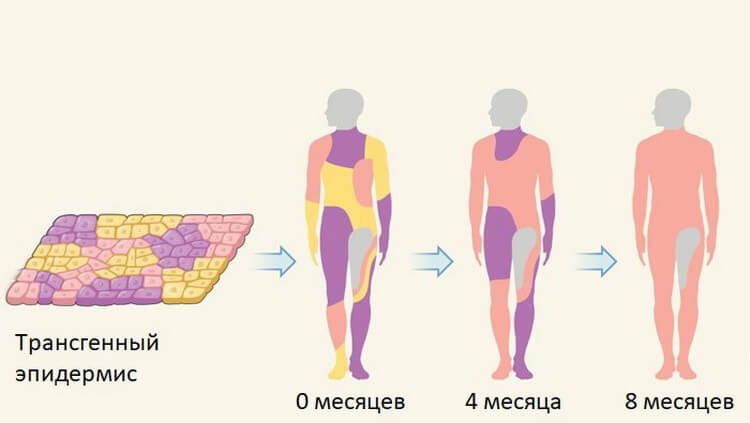
There is a very rare genetic disease — epidermolysis bullosa characterized by blistering and erosions on skin and mucous membranes, skin fragility and its sensitivity to minor mechanical trauma (let’s just say it’s better than “Google”). There is no cure. However, thanks to the achievements of German and Italian scientists, thousands of people around the world suffering from this terrible disease, there was a potential opportunity to deal with it.
Researchers have reported successful experimental treatment of epidermolysis bullosa, in which genetic mutations lead to chronic trauma of the skin. In this case, doctors were able to recover 80 (!) percent of the affected epidermis by using genetically modified cells of the skin. The method involves applying genetically modified skin grafts on the dermis, the tissue located under the outermost layer of the skin. A similar method was previously used on two other patients with the same disease, but in those cases it was only on small areas of the skin.
In the new case, the team working under the guidance of Michel de Luca, an expert in the field of stem cells from the University of Modena and Reggio Nell Emilia in Italy, reports on “life-saving regeneration of almost the whole area of the epidermis of the patient.”

The patient in this case was made by a seven year old boy who was hospitalized in one of hospitals of Germany in June 2015 with a bad case of cutaneous lesions and blisters, which eventually led to the fact that he lost almost 80 percent of the skin. When all medical methods were unsuccessful, the child’s parents agreed to an experimental treatment that had at least some chance that their son would survive. Scientists decided to restore the epidermis in parts.
Were first produced a collection of cells from the unaffected skin of the boy. The researchers then used these cells as the basis for the cultivation of protein crops that have been genetically engineered so that they lacked the gene LAMB3 mutations that cause disease. Based on these protein crops, the researchers created a transgenic epidermal grafts, which subsequently, under the three operations had replaced the lost skin with new and healthy layer of the epidermis.
After 21 months of observations since the last surgery, the patient fully recovered and now has a new and perfectly healthy skin is not susceptible to normal damage, which, of course, is not peculiar to the skin of people with epidermolysis bullosa.

“This patient was discharged in February 2016. His epidermis at the moment is completely stable and has natural strength. No blisters, itching, ointments and drugs,” the researchers report in the published article.
It is definitely an awesome event for a kid whose barely begun life could have ended without such unique methods of treatment. However, the team recognizes that such extensive surgery is not always necessary in all such cases, even though their actual opportunity from the scientific point of view.
“We can safely say that the clinical picture of the patient (massive epidermal loss, the critical condition and unfavorable forecasts) were unusual for such cases, and our aggressive surgery is (required for this patient) really stands out from the clinical course of the disease, most patients with epidermolysis bullosa. However, the progressive replacement of unhealthy epidermis can be a lot less invasive surgical methods, though more limited areas of the body,” say the scientists.
The researchers also report that a more long-term monitoring of the condition of the skin of the boy to ensure that she stays as healthy with it growing up. But when you consider that worldwide, about 500 000 people currently exposed to different forms of epidermolysis bullosa, the result of this treatment, no doubt, be called an outstanding achievement of modern medicine, giving hope to many people.
Detailed description of the performed works of German and Italian scientists published in the journal Nature.
Scientists won one of the deadliest and incurable diseases
Nikolai Khizhnyak